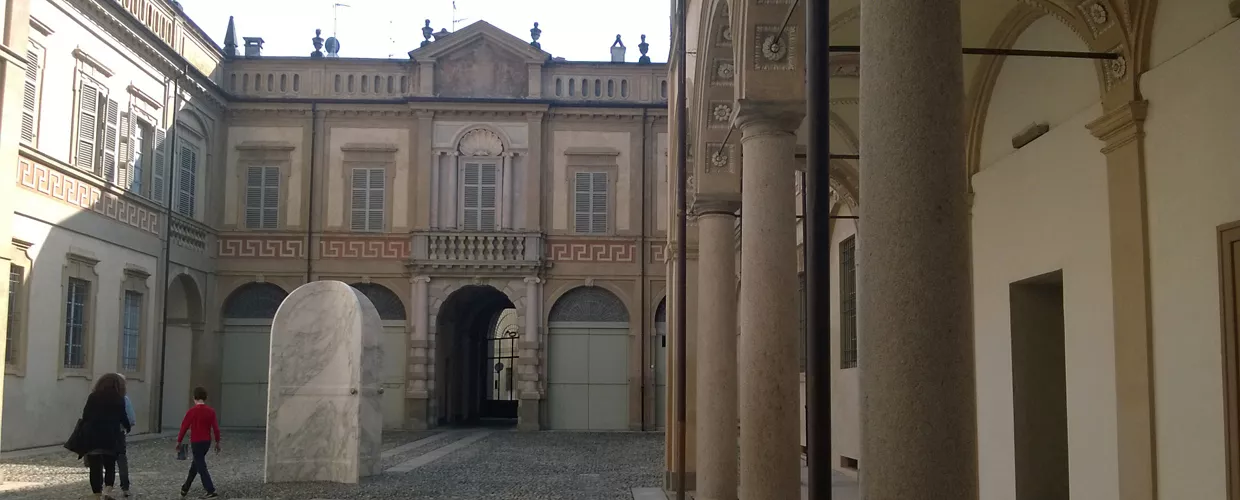

Overview
The arrival of the Farnese in Piacenza had opened a season that would see numerous aristocratic families concentrate in the city with their residences. In the mid-1700s there would have been over one hundred and twenty noble palaces, for some of which architects of clear fame such as Ferdinando Galli Bibiena or Luigi Vanvitelli had been called upon to intervene. Something similar had happened to religious buildings, so much so that Piacenza is still known as 'the city of a hundred churches'.
Good examples are the church of San Pietro in Via Roma, next to the former Jesuit College, or the late seventeenth-century Oratory of San Cristoforo at the intersection of Via Gregorio X – a crossroads of Via Roma – and Via Genocchi, which in its interior has a Greek cross dome frescoed by Galli Bibiena with grandiose scenic effects.
Civil palaces often bear the names of dominant families in minor centres of Piacentino, such as Palazzo Scotti di Sarmato, further north in Via San Siro, or – again in Via Roma, but more towards the suburbs – Palazzo Anguissola di Grazzano of the late 18th century, at number 99. Also in Via Roma but at number 80, Palazzo Costa is in turn a remarkable architectural and decorative creation by Galli Bibiena, where a 17th-century Environmental Museum organised and managed by the Horak Foundation is housed.
Via Roma, 29121 Piacenza PC, Italia